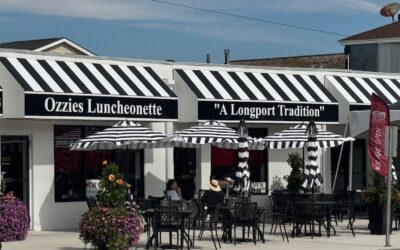According to the Wall Street Journal, the US octogenarian population is expected to increase by 4 million over the next 5 years. The oldest “boomers” are approaching 80, and advances in technology and medicine mean that enjoying life well into one’s 90s is increasingly possible. This growing population will need housing, and demand will soon exceed supply.
The senior housing market suffered a tremendous blow during the pandemic and many new construction projects were halted. As the senior population rebounds, a housing shortage looms. NIC MAP, a leading senior housing data service, has crunched the numbers. Their conclusion? “More than 560,000 new units are needed to meet all the demand by 2030, but only 191,000 will be added at current development rates.”
But many developers are hesitant to commit to new construction of senior facilities in these uncertain times.
The Acquisition Solution
Instead, many insiders are looking to acquisitions. Existing senior housing communities may currently be purchased for less than the cost of a new build. A cost segregation study can make your acquisition even more profitable, facilitating a smooth entry into this growing vertical.
Senior living facilities make excellent candidates for cost segregation:
- Short-lived 5-year assets include many features of residential rentals – carpet, wallpaper, moldings, window treatments, counters, cabinets, etc.
- Facilities that provide specialized medical treatment will have an even greater fraction of short-lived assets, as much of the equipment – along with associated dedicated electric and plumbing – may be segregated as 5-year assets.
- Consider a large facility acquired and placed-in-service in 2020:
- 114 rooms in an 84,000SF building
- Full-service commercial kitchen and dining room
- Nurses’ stations, physical therapy center
- Depreciable basis: $17,480,000
Engineers were able to accelerate 27% of assets – including a great deal of specialty therapy equipment – and the first-year tax savings exceeded $1.5M.
While acquisitions are certainly a smart choice in today’s climate, industry experts speculate that there is a place for newly constructed senior facilities.
High-End New Builds
Currently, new construction projects tend to target wealthy seniors who are willing to pay higher rents for premium amenities, fine dining, and entertaining programming.
A cost segregation study can help offset the hefty price tag associated with the construction of a luxury facility.
Upscale facilities often provide many outdoor amenities. Associated assets may be eligible for reclassification as 15-year land improvements, boosting the cost segregation benefit.
Consider this upscale property, constructed and placed-in-service in 2024:
- 152 units in 216,000SF
- Premium finishes and materials throughout – granite countertops, stainless steel appliances
- Fitness center
- Inground pool
- Pickleball court
- Community patio with grills and outdoor seating
- Movie theatre
- Library
- Clubhouse
- Regular programming and activities
- Depreciable basis: $43,090,000
Engineers were able to accelerate 21.8% of assets. Many assets associated with the outdoor amenities – pool, patio, pickleball court, etc. – were indeed classified as 15-year land improvements. The resulting first-year tax savings was $2.07M.
The Role of Cost Segregation
The demand for senior housing is primed to explode. Developers interested in this vertical may consider a reasonably priced acquisition or investment in a newly constructed luxury facility. Renovating or adding on to existing facilities are also popular options.
No matter your approach, cost segregation can facilitate your entry into this promising sector.
If you’ve got a senior living project in the works, cost segregation could help make your deal happen. Let us know if we can give you a hand.
Thank you to Capstan Tax Strategies for this article, which originally appeared here and is republished with permission.







